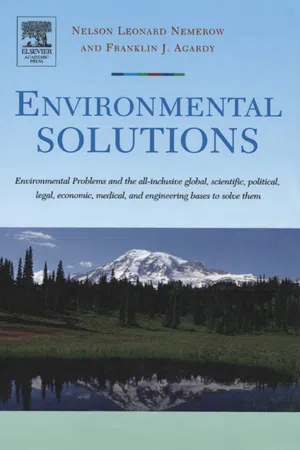Introduction
Virtually all environmental solutions are implemented in a political context. While that statement can send chills down the back of many environmental experts and practitioners, the reality is that most decisions must further a set of goals or expectations derived from a political process. How the “solution” advances those goals and expectations and how the community or society in general perceive it, can result in some tough sledding or smooth sailing.
Understanding this reality and embracing the fact that politics are the tools that govern how a democratic society works out its conflicting interests, can improve the ability of practitioners to successfully solve environmental problems. Politics, to a large degree, created the modern environmental legal and regulatory framework within which most solutions reside. Politics can also be a significant barrier to new approaches and significant “paradigm shifts” as the broader community and their elected and appointed representatives work to sort out the conflicting values. Likewise the politics of necessity can be the lubricant for innovation.
Recognizing that there is often a political aspect to the solutions we seek to have implemented can actually be an empowering observation, because it means that solution advocates can be part of the discussion.
By now you recognize that the term “political” here is not referring to the partisan politics of elections but the practical politics of society dealing with multiple objectives. Should economic considerations be more important than clean-up goals? Should our objective be to protect the general population or some sensitive sub-population like children? Should a stream restoration end before it has been returned to some pristine condition? These are examples of policy or political considerations that are “value driven.” If society can instruct the process, in a unified way, of where it wants to end up on any of those continuums, the technical work can be done to devise the solution. If on the other hand, a solution is put forward that is ahead of that normalizing process, it can be rejected before it has the chance to be explained and debated. Allocating public resources, mitigating involuntary risks, and preserving other societal demands are all subject to political debate as to what is acceptable.
These “policy continuums” are present in most environmental debates and solution designs. They overlay the technical and scientific aspects of our work. Where the community at large “frames” the solution and, how the solution fits into that frame is very important. In most policy debates, there are preconceived perspectives from different audiences in advance of any detailed or specific discussion. As a simplistic example, it would be easy to see an environmental group being skeptical of a solution being offered by an industry representative. Likewise, one could visualize an industry environmental practitioner expecting a proposal from a local environmental organization to be unworkable before listening to the concerns. While the real world experiences never follow this kind of simple calculus, these perceptions are real and understanding they exist can be very helpful in developing fact-based discussions about solutions.
We will discuss the nature of these policy continuums with some examples to better understand how they can influence environmental solutions.
The debates over policy can also happen in many different forums. There is no “official” place where you can go to have your political discussion about the environment. Some issues will be debated and discussed at forums as diverse as the United Nations (UN) to a local town council. Some are discussed in official meetings with agency experts and decision makers, while others may take place on the floors of the Congress in Washington, D.C.
Issues related to global warming or climate change are good examples of where debates can occur at the international level under the sponsorship of organizations like the UN or at the local town or city level. Trying to develop a global framework and greenhouse gas target will likely be debated at the appropriate international forums. Statements in favor of one approach or the other could come from local resolutions sent to the larger international forums as well as local contributions toward solutions (a town energy ordinance or a state-level renewable fuel portfolio are examples of more local policies). Here you have a large-scale environmental problem that can have solutions or actions at the international and local levels.
The debates over these different aspects of an environmental issue take place in many different forums. It is important to understand what forum you are in and what format the decisions are being made or codified. The basic formats include: government budgets, where funding can be allocated for a solution; laws passed at local, state, and national levels; regulations or guidelines that provide the road maps for implementing laws, and agreements between parties from interstate agreements to international treaties.
Part of the dynamics of politics includes understanding how policy implications can change over time. We like to think there is a solution for any environmental problem, and that is generally true. What changes over time can be society’s values concerning how much risk is acceptable, our understanding of technology and our ability to continually innovate less costly solutions or our understanding of the environmental problem, and the nature of the impact. All of these factors play a role and influence the many different interest groups that engage in the political debate. Understanding the various interests in a debate is another essential element of understanding how environmental solutions can be influenced by politics. The risk acceptable to one group may not be acceptable to another, one group’s perception or confidence in an innovative solution will differ from another’s. These are all-important pieces of the political discussion and include public interest groups, groups with economic interests, groups substantially value driven, and groups directly impacted by actions or solutions.
We can summarize the elements of understanding and interacting with the politics of environmental solutions into four overarching categories:
